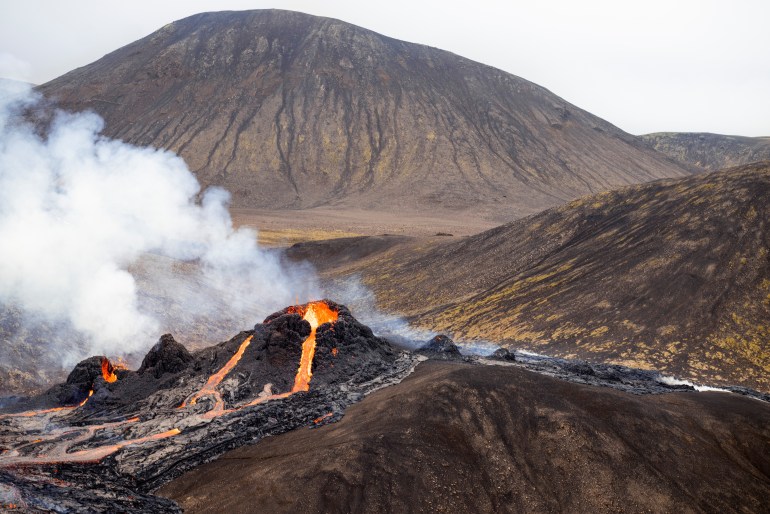Residents evacuated and infrastructure to be protected as experts warn of imminent eruption in Grindavik.
Icelandic authorities are preparing to build defensive walls around a geothermal power plant in the southwestern part of the country that they hope will protect it from lava flows as a volcanic eruption is expected any day.
Seismic activity decreased in size and intensity on Monday, but the risk of a volcanic eruption remained significant, authorities said, after earthquakes and evidence of magma spreading underground in recent weeks.
Materials and equipment for the construction of a large protective dike around the plant will be moved to the facility on Tuesday while operators await formal government approval to begin the work.
“We have a fissure that’s about 15km [9.3 miles] long, and anywhere on that fissure, we can see that an eruption could happen,” said Vidir Reynisson, head of Iceland’s Department of Civil Protection and Emergency Management.
“The magma is now at a very shallow depth, so we are expecting an eruption within a couple of hours at the shortest but at least within a couple of days,” he warned on Saturday.
The plant, which supplies power to the entire country and produces hot and cold water for the Reykjanes peninsula, is located on Iceland’s southwestern coast. Hundreds of earthquakes in the past few days, and magma shifting under the surface have prompted the unprecedented evacuation of 4,000 residents from the fishing town of Grindavik, just over 6km (about 4 miles) from the power plant.
Iceland is located between two of the largest tectonic plates on the planet, the Eurasian and the North American plates. They move in opposite directions, making the island a seismic and volcanic hot spot.
The Icelandic Meteorological Office warned on Monday of a “significant likelihood” of an eruption in the coming days on or just off the Reykjanes peninsula and near the capital, Reykjavik.

Shaken residents
Iceland, which has 33 active volcanic systems, declared a state of emergency and ordered the mandatory evacuation of Grindavik on Saturday.
Inhabitants of Grindavik described being whisked from their homes early on Saturday as the ground shook, roads cracked and buildings suffered structural damage.
Hans Vera, a Belgian-born 56-year-old who has lived in Iceland since 1999, said there had been a constant shaking of his family’s house.
“You would never be steady. It was always shaking, so there was no way to get sleep,” said Vera, who is now staying at his sister-in-law’s home in a Reykjavik suburb.
“It’s not only the people in Grindavik who are shocked about this situation. It’s the whole of Iceland.”
Emergency shelters and help centres have opened in several nearby towns, but most Grindavik residents are staying with friends or relatives, media reported.









